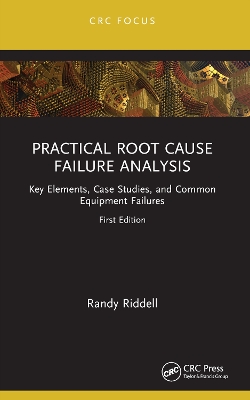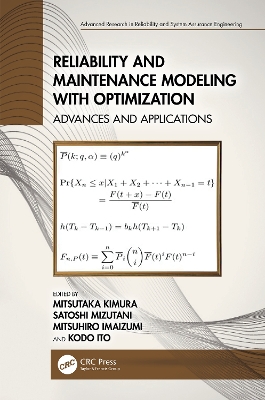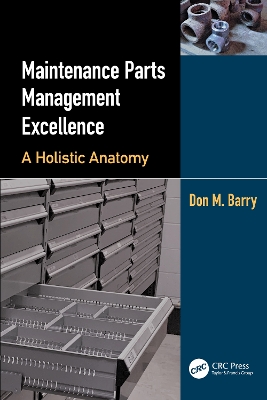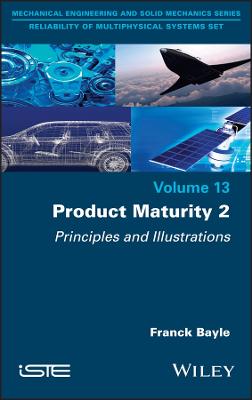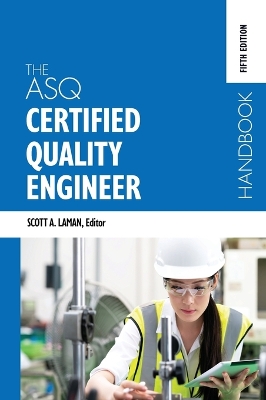Product Maturity 1
 portes grátis
portes grátis
Product Maturity 1
Theoretical Principles and Industrial Applications
Bayle, Franck
ISTE Ltd and John Wiley & Sons Inc
04/2022
224
Dura
Inglês
9781786307392
15 a 20 dias
464
Descrição não disponível.
Foreword by Laurent Denis ix
Foreword by Serge Zaninotti xiii
Acknowledgements xv
Introduction xvii
Chapter 1. Reliability Review 1
1.1. Failure rate 1
1.2. Temperature effect 6
1.3. Effect of maintenance 6
1.4. MTBF 7
1.5. Nature of the reliability objective 9
Chapter 2. Maturity 11
Serge ZANINOTTI
2.1. Context 11
2.2. Normative context and its implications 13
2.2.1. Quality standards 13
2.2.2. Quality management system and product quality 13
2.2.3. Product quality and dependability 16
2.2.4. Product dependability and maturity 18
2.2.5. Standards in various domains 23
2.2.6. Perspectives 24
2.3. Building of maturity 28
2.4. Confirmation of maturity 30
Chapter 3. Derating Analysis 33
3.1. Derating 33
3.2. Rules provided by the manufacturers of components 34
3.2.1. CMS resistors 34
3.2.2. Capacitors 38
3.2.3. Magnetic circuits 41
3.2.4. Fuses 41
3.2.5. Resonators 42
3.2.6. Oscillators 42
3.2.7. Photocouplers 42
3.2.8. Diodes 43
3.2.9. Zener diodes 43
3.2.10. Tranzorb diodes 43
3.2.11. Low power bipolar transistors 45
3.2.12. Power bipolar transistors 45
3.2.13. Low power MOSFET transistors 46
3.2.14. High power MOSFET transistors 46
3.2.15. Integrated circuits 47
3.3. Reference-based approach 47
3.4. Creation of derating rules 49
3.4.1. Rules for constant temperature 53
3.4.2. Rule for voltage 58
3.5. Summary 59
Chapter 4. Components with Limited Service Life 61
4.1. RDF 2000 guide 63
4.1.1. Power transistor 63
4.1.2. Photocouplers 64
4.1.3. Switch or push button 64
4.1.4. Connectors 65
4.2. FIDES 2009 guide 65
4.2.1. Fans 66
4.2.2. Batteries 66
4.3. Manufacturer's data 68
4.3.1. Wet electrolytic capacitor 68
4.3.2. Connectors 71
4.3.3. Relays 72
4.3.4. Optocouplers 73
4.3.5. Batteries 76
4.3.6. Fans 77
4.3.7. Flash memories 78
4.3.8. Potentiometers 79
4.3.9. Quartz oscillators 81
4.3.10. Voltage references 81
4.4. Summary of components with limited service life 82
Chapter 5. Analysis of Product Performances 85
5.1. Analyses during the design stage 85
5.1.1. Worst-case analysis 85
5.1.2. Quadratic analysis 88
5.1.3. Monte-Carlo analysis 89
5.1.4. Numerical simulations 91
5.2. Analyses during the manufacturing stage 92
Chapter 6. Aggravated Tests 95
6.1. Definition 95
6.2. Objectives of aggravated tests 95
6.3. Principles of aggravated tests 97
6.3.1. Choice of physical constraints 101
6.3.2. Principle of HALT 101
6.3.3. Specific or additional constraints 106
6.3.4. Number of required samples 106
6.3.5. Operational test, diagnosis and identification of weaknesses 107
6.3.6. Monitoring specification 107
6.3.7. Instrumentation 108
6.3.8. Root cause analysis, corrective actions and breakdown management 108
6.4. Robustness 111
6.4.1. Estimation of robustness margins 111
6.4.2. Sufficient margins 112
Chapter 7. Burn-In Test 117
7.1. Link between HALT and HASS tests 119
7.2. POS1 test 119
7.2.1. Miner's approach 119
7.2.2. Approach according to the physical laws of failure 121
7.2.3. Zero-failure reliability proof approach 124
7.3. POS2 test 125
7.3.1. Influence of parameter Q 128
7.3.2. Influence of parameter p 129
7.3.3. Summary of the POS2 test 133
7.4. HASS cycle 133
7.4.1. Precipitation stage 133
7.4.2. Detection stage 134
7.5. Should burn-in tests be systematically conducted? 136
7.5.1. Constraints extrinsic to the equipment manufacturer 137
7.5.2. Constraints intrinsic to the equipment manufacturer 137
7.5.3. Decision criteria 137
7.6. Test coverage 142
7.7. Economic aspect of burn-in 144
7.7.1. No burn-in test is conducted 145
7.7.2. Burn-in test is conducted 146
Chapter 8. Run-In 153
8.1. Run-in principle 153
8.2. Stabilization 156
8.2.1. Proposed principle 156
8.2.2. Drift acceleration law 159
8.2.3. Choice of the drift model 161
8.2.4. Equivalent level of physical contribution 162
8.3. Expression of the corresponding degradation 164
8.4. Optimization of the stabilization time 165
8.5. Estimation of a prediction interval of the degradation 167
8.5.1. Principle of the stabilization method 167
List of Notations 171
List of Definitions 173
List of Acronyms 179
References 183
Index 187
Foreword by Serge Zaninotti xiii
Acknowledgements xv
Introduction xvii
Chapter 1. Reliability Review 1
1.1. Failure rate 1
1.2. Temperature effect 6
1.3. Effect of maintenance 6
1.4. MTBF 7
1.5. Nature of the reliability objective 9
Chapter 2. Maturity 11
Serge ZANINOTTI
2.1. Context 11
2.2. Normative context and its implications 13
2.2.1. Quality standards 13
2.2.2. Quality management system and product quality 13
2.2.3. Product quality and dependability 16
2.2.4. Product dependability and maturity 18
2.2.5. Standards in various domains 23
2.2.6. Perspectives 24
2.3. Building of maturity 28
2.4. Confirmation of maturity 30
Chapter 3. Derating Analysis 33
3.1. Derating 33
3.2. Rules provided by the manufacturers of components 34
3.2.1. CMS resistors 34
3.2.2. Capacitors 38
3.2.3. Magnetic circuits 41
3.2.4. Fuses 41
3.2.5. Resonators 42
3.2.6. Oscillators 42
3.2.7. Photocouplers 42
3.2.8. Diodes 43
3.2.9. Zener diodes 43
3.2.10. Tranzorb diodes 43
3.2.11. Low power bipolar transistors 45
3.2.12. Power bipolar transistors 45
3.2.13. Low power MOSFET transistors 46
3.2.14. High power MOSFET transistors 46
3.2.15. Integrated circuits 47
3.3. Reference-based approach 47
3.4. Creation of derating rules 49
3.4.1. Rules for constant temperature 53
3.4.2. Rule for voltage 58
3.5. Summary 59
Chapter 4. Components with Limited Service Life 61
4.1. RDF 2000 guide 63
4.1.1. Power transistor 63
4.1.2. Photocouplers 64
4.1.3. Switch or push button 64
4.1.4. Connectors 65
4.2. FIDES 2009 guide 65
4.2.1. Fans 66
4.2.2. Batteries 66
4.3. Manufacturer's data 68
4.3.1. Wet electrolytic capacitor 68
4.3.2. Connectors 71
4.3.3. Relays 72
4.3.4. Optocouplers 73
4.3.5. Batteries 76
4.3.6. Fans 77
4.3.7. Flash memories 78
4.3.8. Potentiometers 79
4.3.9. Quartz oscillators 81
4.3.10. Voltage references 81
4.4. Summary of components with limited service life 82
Chapter 5. Analysis of Product Performances 85
5.1. Analyses during the design stage 85
5.1.1. Worst-case analysis 85
5.1.2. Quadratic analysis 88
5.1.3. Monte-Carlo analysis 89
5.1.4. Numerical simulations 91
5.2. Analyses during the manufacturing stage 92
Chapter 6. Aggravated Tests 95
6.1. Definition 95
6.2. Objectives of aggravated tests 95
6.3. Principles of aggravated tests 97
6.3.1. Choice of physical constraints 101
6.3.2. Principle of HALT 101
6.3.3. Specific or additional constraints 106
6.3.4. Number of required samples 106
6.3.5. Operational test, diagnosis and identification of weaknesses 107
6.3.6. Monitoring specification 107
6.3.7. Instrumentation 108
6.3.8. Root cause analysis, corrective actions and breakdown management 108
6.4. Robustness 111
6.4.1. Estimation of robustness margins 111
6.4.2. Sufficient margins 112
Chapter 7. Burn-In Test 117
7.1. Link between HALT and HASS tests 119
7.2. POS1 test 119
7.2.1. Miner's approach 119
7.2.2. Approach according to the physical laws of failure 121
7.2.3. Zero-failure reliability proof approach 124
7.3. POS2 test 125
7.3.1. Influence of parameter Q 128
7.3.2. Influence of parameter p 129
7.3.3. Summary of the POS2 test 133
7.4. HASS cycle 133
7.4.1. Precipitation stage 133
7.4.2. Detection stage 134
7.5. Should burn-in tests be systematically conducted? 136
7.5.1. Constraints extrinsic to the equipment manufacturer 137
7.5.2. Constraints intrinsic to the equipment manufacturer 137
7.5.3. Decision criteria 137
7.6. Test coverage 142
7.7. Economic aspect of burn-in 144
7.7.1. No burn-in test is conducted 145
7.7.2. Burn-in test is conducted 146
Chapter 8. Run-In 153
8.1. Run-in principle 153
8.2. Stabilization 156
8.2.1. Proposed principle 156
8.2.2. Drift acceleration law 159
8.2.3. Choice of the drift model 161
8.2.4. Equivalent level of physical contribution 162
8.3. Expression of the corresponding degradation 164
8.4. Optimization of the stabilization time 165
8.5. Estimation of a prediction interval of the degradation 167
8.5.1. Principle of the stabilization method 167
List of Notations 171
List of Definitions 173
List of Acronyms 179
References 183
Index 187
Este título pertence ao(s) assunto(s) indicados(s). Para ver outros títulos clique no assunto desejado.
product; industrial; industrial engineering; product designing; product designer
Foreword by Laurent Denis ix
Foreword by Serge Zaninotti xiii
Acknowledgements xv
Introduction xvii
Chapter 1. Reliability Review 1
1.1. Failure rate 1
1.2. Temperature effect 6
1.3. Effect of maintenance 6
1.4. MTBF 7
1.5. Nature of the reliability objective 9
Chapter 2. Maturity 11
Serge ZANINOTTI
2.1. Context 11
2.2. Normative context and its implications 13
2.2.1. Quality standards 13
2.2.2. Quality management system and product quality 13
2.2.3. Product quality and dependability 16
2.2.4. Product dependability and maturity 18
2.2.5. Standards in various domains 23
2.2.6. Perspectives 24
2.3. Building of maturity 28
2.4. Confirmation of maturity 30
Chapter 3. Derating Analysis 33
3.1. Derating 33
3.2. Rules provided by the manufacturers of components 34
3.2.1. CMS resistors 34
3.2.2. Capacitors 38
3.2.3. Magnetic circuits 41
3.2.4. Fuses 41
3.2.5. Resonators 42
3.2.6. Oscillators 42
3.2.7. Photocouplers 42
3.2.8. Diodes 43
3.2.9. Zener diodes 43
3.2.10. Tranzorb diodes 43
3.2.11. Low power bipolar transistors 45
3.2.12. Power bipolar transistors 45
3.2.13. Low power MOSFET transistors 46
3.2.14. High power MOSFET transistors 46
3.2.15. Integrated circuits 47
3.3. Reference-based approach 47
3.4. Creation of derating rules 49
3.4.1. Rules for constant temperature 53
3.4.2. Rule for voltage 58
3.5. Summary 59
Chapter 4. Components with Limited Service Life 61
4.1. RDF 2000 guide 63
4.1.1. Power transistor 63
4.1.2. Photocouplers 64
4.1.3. Switch or push button 64
4.1.4. Connectors 65
4.2. FIDES 2009 guide 65
4.2.1. Fans 66
4.2.2. Batteries 66
4.3. Manufacturer's data 68
4.3.1. Wet electrolytic capacitor 68
4.3.2. Connectors 71
4.3.3. Relays 72
4.3.4. Optocouplers 73
4.3.5. Batteries 76
4.3.6. Fans 77
4.3.7. Flash memories 78
4.3.8. Potentiometers 79
4.3.9. Quartz oscillators 81
4.3.10. Voltage references 81
4.4. Summary of components with limited service life 82
Chapter 5. Analysis of Product Performances 85
5.1. Analyses during the design stage 85
5.1.1. Worst-case analysis 85
5.1.2. Quadratic analysis 88
5.1.3. Monte-Carlo analysis 89
5.1.4. Numerical simulations 91
5.2. Analyses during the manufacturing stage 92
Chapter 6. Aggravated Tests 95
6.1. Definition 95
6.2. Objectives of aggravated tests 95
6.3. Principles of aggravated tests 97
6.3.1. Choice of physical constraints 101
6.3.2. Principle of HALT 101
6.3.3. Specific or additional constraints 106
6.3.4. Number of required samples 106
6.3.5. Operational test, diagnosis and identification of weaknesses 107
6.3.6. Monitoring specification 107
6.3.7. Instrumentation 108
6.3.8. Root cause analysis, corrective actions and breakdown management 108
6.4. Robustness 111
6.4.1. Estimation of robustness margins 111
6.4.2. Sufficient margins 112
Chapter 7. Burn-In Test 117
7.1. Link between HALT and HASS tests 119
7.2. POS1 test 119
7.2.1. Miner's approach 119
7.2.2. Approach according to the physical laws of failure 121
7.2.3. Zero-failure reliability proof approach 124
7.3. POS2 test 125
7.3.1. Influence of parameter Q 128
7.3.2. Influence of parameter p 129
7.3.3. Summary of the POS2 test 133
7.4. HASS cycle 133
7.4.1. Precipitation stage 133
7.4.2. Detection stage 134
7.5. Should burn-in tests be systematically conducted? 136
7.5.1. Constraints extrinsic to the equipment manufacturer 137
7.5.2. Constraints intrinsic to the equipment manufacturer 137
7.5.3. Decision criteria 137
7.6. Test coverage 142
7.7. Economic aspect of burn-in 144
7.7.1. No burn-in test is conducted 145
7.7.2. Burn-in test is conducted 146
Chapter 8. Run-In 153
8.1. Run-in principle 153
8.2. Stabilization 156
8.2.1. Proposed principle 156
8.2.2. Drift acceleration law 159
8.2.3. Choice of the drift model 161
8.2.4. Equivalent level of physical contribution 162
8.3. Expression of the corresponding degradation 164
8.4. Optimization of the stabilization time 165
8.5. Estimation of a prediction interval of the degradation 167
8.5.1. Principle of the stabilization method 167
List of Notations 171
List of Definitions 173
List of Acronyms 179
References 183
Index 187
Foreword by Serge Zaninotti xiii
Acknowledgements xv
Introduction xvii
Chapter 1. Reliability Review 1
1.1. Failure rate 1
1.2. Temperature effect 6
1.3. Effect of maintenance 6
1.4. MTBF 7
1.5. Nature of the reliability objective 9
Chapter 2. Maturity 11
Serge ZANINOTTI
2.1. Context 11
2.2. Normative context and its implications 13
2.2.1. Quality standards 13
2.2.2. Quality management system and product quality 13
2.2.3. Product quality and dependability 16
2.2.4. Product dependability and maturity 18
2.2.5. Standards in various domains 23
2.2.6. Perspectives 24
2.3. Building of maturity 28
2.4. Confirmation of maturity 30
Chapter 3. Derating Analysis 33
3.1. Derating 33
3.2. Rules provided by the manufacturers of components 34
3.2.1. CMS resistors 34
3.2.2. Capacitors 38
3.2.3. Magnetic circuits 41
3.2.4. Fuses 41
3.2.5. Resonators 42
3.2.6. Oscillators 42
3.2.7. Photocouplers 42
3.2.8. Diodes 43
3.2.9. Zener diodes 43
3.2.10. Tranzorb diodes 43
3.2.11. Low power bipolar transistors 45
3.2.12. Power bipolar transistors 45
3.2.13. Low power MOSFET transistors 46
3.2.14. High power MOSFET transistors 46
3.2.15. Integrated circuits 47
3.3. Reference-based approach 47
3.4. Creation of derating rules 49
3.4.1. Rules for constant temperature 53
3.4.2. Rule for voltage 58
3.5. Summary 59
Chapter 4. Components with Limited Service Life 61
4.1. RDF 2000 guide 63
4.1.1. Power transistor 63
4.1.2. Photocouplers 64
4.1.3. Switch or push button 64
4.1.4. Connectors 65
4.2. FIDES 2009 guide 65
4.2.1. Fans 66
4.2.2. Batteries 66
4.3. Manufacturer's data 68
4.3.1. Wet electrolytic capacitor 68
4.3.2. Connectors 71
4.3.3. Relays 72
4.3.4. Optocouplers 73
4.3.5. Batteries 76
4.3.6. Fans 77
4.3.7. Flash memories 78
4.3.8. Potentiometers 79
4.3.9. Quartz oscillators 81
4.3.10. Voltage references 81
4.4. Summary of components with limited service life 82
Chapter 5. Analysis of Product Performances 85
5.1. Analyses during the design stage 85
5.1.1. Worst-case analysis 85
5.1.2. Quadratic analysis 88
5.1.3. Monte-Carlo analysis 89
5.1.4. Numerical simulations 91
5.2. Analyses during the manufacturing stage 92
Chapter 6. Aggravated Tests 95
6.1. Definition 95
6.2. Objectives of aggravated tests 95
6.3. Principles of aggravated tests 97
6.3.1. Choice of physical constraints 101
6.3.2. Principle of HALT 101
6.3.3. Specific or additional constraints 106
6.3.4. Number of required samples 106
6.3.5. Operational test, diagnosis and identification of weaknesses 107
6.3.6. Monitoring specification 107
6.3.7. Instrumentation 108
6.3.8. Root cause analysis, corrective actions and breakdown management 108
6.4. Robustness 111
6.4.1. Estimation of robustness margins 111
6.4.2. Sufficient margins 112
Chapter 7. Burn-In Test 117
7.1. Link between HALT and HASS tests 119
7.2. POS1 test 119
7.2.1. Miner's approach 119
7.2.2. Approach according to the physical laws of failure 121
7.2.3. Zero-failure reliability proof approach 124
7.3. POS2 test 125
7.3.1. Influence of parameter Q 128
7.3.2. Influence of parameter p 129
7.3.3. Summary of the POS2 test 133
7.4. HASS cycle 133
7.4.1. Precipitation stage 133
7.4.2. Detection stage 134
7.5. Should burn-in tests be systematically conducted? 136
7.5.1. Constraints extrinsic to the equipment manufacturer 137
7.5.2. Constraints intrinsic to the equipment manufacturer 137
7.5.3. Decision criteria 137
7.6. Test coverage 142
7.7. Economic aspect of burn-in 144
7.7.1. No burn-in test is conducted 145
7.7.2. Burn-in test is conducted 146
Chapter 8. Run-In 153
8.1. Run-in principle 153
8.2. Stabilization 156
8.2.1. Proposed principle 156
8.2.2. Drift acceleration law 159
8.2.3. Choice of the drift model 161
8.2.4. Equivalent level of physical contribution 162
8.3. Expression of the corresponding degradation 164
8.4. Optimization of the stabilization time 165
8.5. Estimation of a prediction interval of the degradation 167
8.5.1. Principle of the stabilization method 167
List of Notations 171
List of Definitions 173
List of Acronyms 179
References 183
Index 187
Este título pertence ao(s) assunto(s) indicados(s). Para ver outros títulos clique no assunto desejado.

